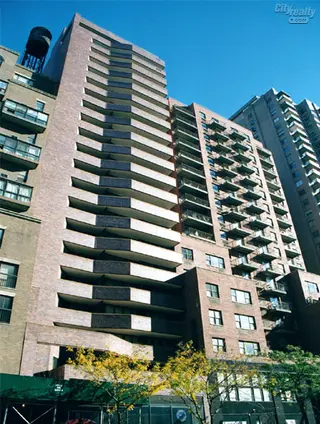 Carter Horsley
Carter HorsleyDec 23, 2011
Carter's Review
New York City is full of surprises, usually of juxtaposition, or scale, and, in the period prior to World War 11, design.
In the post-war period, however, major design surprises have been few and far between and mostly commercial: Lever House, the Seagram Building, the World Trade Center, Citicorp Center, 77 Water Street, 9 West 57th Street, United Nations Plaza Hotel, and the Wintergarden at the World Financial Center at Battery Park City are the most obvious examples.
Some residential projects such as the Galleria at 115 East 57th Street and Trump Tower have been innovative and stunning. There is, of course, incredible diversity within the quite narrow range of permissible building "envelopes" authorized by the city's complex zoning regulations, but such diversity generally has been minor.
This building, designed by Liebman Liebman & Associates, is one of the exceptions: an extremely bold but modest residential building.
While not as complex as some other buildings of its era such as the angular plans of Waterside along the East River, or the embracing ruggedness of the four massive waterfront towers of I 1 99 Plaza at 111th Street, or the highly textured design curves and sunken plazas of 309 East 49th Street, or the bundled cylindrical forms of the Corinthian at 38th Street and Second Avenue, this relatively modest, 22-story tower is very striking, especially for a midblock structure.
In their fine book, "The AIA Guide to New York City, Third Edition," (Harcourt Brace Jovanovich, 1988), Elliott Willensky and Norval White noted that this building was a "high style, purply brick design statement, but embodying a quality more appropriate to Milan than 86th Street."
Nonetheless, 86th Street has continued to change dramatically and this building now stands out less, in the sense that its high quality was unusual on this part of 86th Street. In recent years, 86th Street has undergone dramatic redevelopment and hardly any traces remain of its once low-rise environment. Some of the new buildings are not too bad, but this still remains the most interesting.
Its sculptural balconies recall those designed by Paul & Jarman for the handsome apartment building nearby at 247 East 87th Street that was completed in 1966. Those balconies had brick walls identical with the rest of the building's façades as this building has but while the 87th Street balconies were boxy and rectilinear creating a strong visual pattern those on this building are angled at the west end and are stacked horizontally creating a visual "ladder."
While the tower's asymmetrical form is simple, its base is not. The entrance, which is at the west side of the building, is marked by a three-story high "opening" that is crossed at the second story by a horizontal façade element that is at a reverse angle with the balconies above. The "tangled" base can be thought of, perhaps, as the hilt for the raised sword of the tower. It is consistent from a design viewpoint and very effective because it interrupts the staccato impact of the tower's balconies much as Gordon Bunshaft of Skidmore, Ownings & Merrill decided to use huge horizontal gutters at the base of his sloped skyscrapers at 9 West 57th Street and 1114 Avenue of the Americas to lessen the veritiginosity of the tower's and also try to maintain some semblance of traditional streetscape.
The building, which has a canopied entrance, has a lobby with a vaulted ceiling of stainless-steel ribs that leads to large and handsome garden of the rear of the building with a fountain. The north façade of the building is very handsome with large balconies, which, are not angled.
The handsome masonry here complements the red-brick buildings on either side of it.
This building, once known as the Far East, was erected in 1983 as a cooperative with 57 apartments. It has a concierge.
This stretch of Yorkville used to have many dance halls and German beer emporiums and this building and the adjacent apartment house at 225, erected one year earlier, marked the beginning of the radical transformation of this area from an lively entertainment district and ethnic enclave to a high-rise "luxury" residential neighborhood.
86th Street in this vicinity remains an important retail artery on the Upper East Side, however, because of the proximity of the express subway station at Lexington Avenue. Directly across the street from this building, for example, are a Barnes & Noble bookstore, a Burger King, a Ben & Jerry, and a Circuit City store.
This neighborhood has good neighborhood shopping and many private schools and religious institutions. This building is a long block and a half from an express subway station at Lexington Avenue and there is excellent crosstown bus service.
Carter B. Horsley

- Co-op built in 1983
- 1 apartment currently for sale ($459K)
- Located in Yorkville
- 57 total apartments 57 total apartments
- 10 recent sales ($382.5K to $1.2M)
 6sqft delivers the latest on real estate, architecture, and design, straight from New York City.
6sqft delivers the latest on real estate, architecture, and design, straight from New York City.
